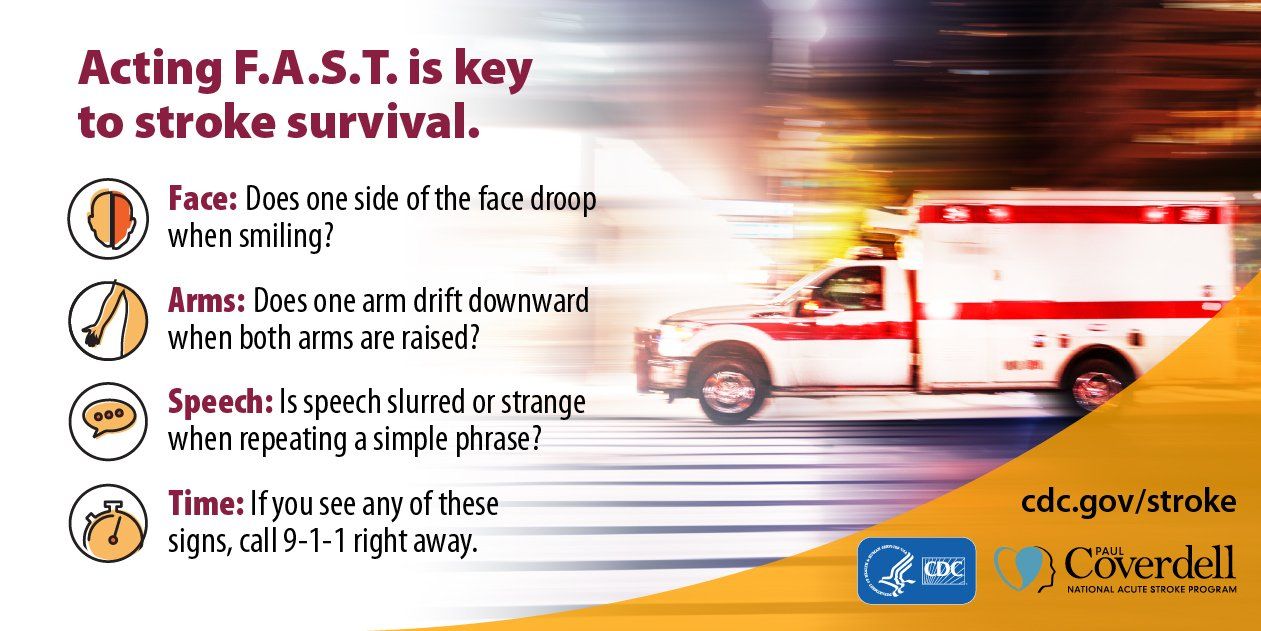Senior Spotlight: Act F.A.S.T. To Increase Stroke Survival
Learn how to act F.A.S.T. to increase stroke survival today.
Helping every individual create an amazing quality of life is our ultimate goal, and that is why we feel so passionately about health awareness as part of our exclusive content. May is National Stroke Awareness Month; we are featuring this topic as part of our Senior Spotlight since 70% of all strokes occur over the age of 65. However, please note that strokes can happen to anyone and recognizing the signs is key regardless of health status and age.
According to the US National Library of Medicine, the risk of stroke increases with age – doubling with each decade after the age of 45. Someone in the US has a stroke every 40 seconds, and every 4 minutes, someone dies of a stroke. Of the 795,000 strokes that occur annually, 610,00 of these are ‘new’ or first strokes. As a leading cause of serious, long-term disability, time is of the essence when treating a stroke and calling 9-1-1 as soon as you even think you see signs of a stroke is key to survival and possible prevention of long-term brain damage.
If you walk away today with one piece of knowledge, we hope it is that you need to act fast – literally!
According to the CDC, an easy way to remember the most common signs of stroke and how to respond is with the acronym 'F.A.S.T.'.
F : Face drooping: Ask the person to smile. Does one side droop?
A : Arm weakness: Ask the person to raise both arms. Does one arm drift downward?
S : Speech difficulty: Ask the person to repeat a simple sentence. Are the words slurred?
T : Time to call 9-1-1: If the person shows any of these signs, call 9-1-1. immediately. Stroke treatment can begin in the ambulance.
Other common signs of stroke are:
Sudden dizziness, trouble walking, or loss of balance or coordination
Sudden trouble seeing in one or both eyes
Sudden severe headache with no known cause
Sudden numbness of the face, arm, or leg
Sudden confusion or trouble understanding others
Please note that this article is not intended to serve as medical advice. Please always consult with your own qualified medical professionals to determine your own stroke risk and to learn how to best support the potential risks of those around you. Knowledge is power - and the more we can take action to learn, to prevent and to react - the better we all can be (physically & mentally!) together!
Resources & Additional Reading:
Influence of Age and Health Behaviors on Stroke Risk: Lessons from Longitudinal Studies
Can You Spot the Signs and Symptoms of a Stroke?
Bobbi Decker
DRE#00607999
Broker Associate
650.346.5352 cell
650.577.3127 efax
www.bobbidecker.com
NAR Instructor….“Designations Create Distinctions”
CIPS, SRS, ABR, CRS, SRES, GRI, CLHMS, REI, AHWD, RSPS, MSLG
Bobbi Decker & Associates fully supports the principles of the Fair Housing Act and the Equal Opportunity Act. For more information, please visit: http://portal.hud.gov/













